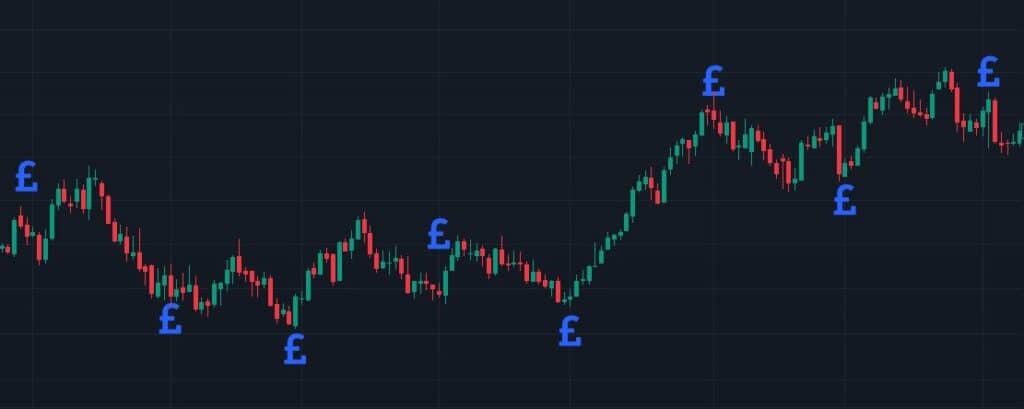Introduction:
Investing in the stock market can be a daunting task, especially for new investors who are trying to navigate the complex world of finance. However, there are a variety of investment strategies that can help simplify the process and make it more accessible to everyone. One such strategy is pound cost averaging.
Pound cost averaging is a simple but effective investment strategy that involves investing a fixed amount of money at regular intervals. This strategy can help mitigate the risks associated with market fluctuations, and it can help you build a diversified portfolio over time. In this article, we will explore what pound cost averaging is, how it works, and whether you should consider using it for your investment portfolio.
What is Pound Cost Averaging?
Pound cost averaging is a strategy that involves investing a fixed amount of money at regular intervals, regardless of the current market conditions. This means that you invest the same amount of money every month, quarter, or year, regardless of whether the market is up or down.
The idea behind pound cost averaging is that by investing a fixed amount of money at regular intervals, you can take advantage of the fluctuations in the market. When the market is up, you will buy fewer shares with your fixed amount of money, and when the market is down, you will buy more shares with the same amount of money. Over time, this can help you build a diversified portfolio and potentially earn higher returns than if you had invested a lump sum of money at a single point in time.
How Does Pound Cost Averaging Work?
To understand how pound cost averaging works, let’s consider an example. Suppose you want to invest £1,000 in a particular stock. You could either invest the entire £1,000 at once or spread the investment over time using pound cost averaging.
If you choose to invest the entire £1,000 at once, you would be exposed to the risks associated with the current market conditions. If the market is up, you may end up buying fewer shares than if the market were down. On the other hand, if the market is down, you may end up buying more shares than if the market were up.
If you choose to use pound cost averaging, you would invest a fixed amount of money, say £100, every month for ten months. This means that you would buy ten lots of shares at different prices. If the market is up in one month, you will buy fewer shares, and if the market is down in another month, you will buy more shares. Over time, this can help you build a diversified portfolio and potentially earn higher returns.
Should You Use Pound Cost Averaging?

Whether you should use pound cost averaging depends on your investment goals, risk tolerance, and financial situation. Here are some factors to consider:
Investment goals: Pound cost averaging is a long-term investment strategy that works best for investors who have a long-term investment horizon. If you are looking to make short-term gains, pound cost averaging may not be the best strategy for you.
Risk tolerance: Pound cost averaging can help mitigate the risks associated with market fluctuations, but it does not eliminate them entirely. If you are risk-averse, pound cost averaging may be a good strategy for you, as it can help you avoid the temptation to time the market.
Financial situation: Pound cost averaging requires a consistent investment over time. If you cannot commit to investing a fixed amount of money at regular intervals, pound cost averaging may not be the best strategy for you.
Benefits of Pound Cost Averaging
Mitigates the impact of market volatility: Pound cost averaging helps investors to reduce the impact of market volatility on their investment portfolio. By investing a fixed amount of money at regular intervals, investors can take advantage of the fluctuations in the market, thereby reducing the overall risk of their investment.
Disciplined approach to investing: Pound cost averaging helps investors to adopt a disciplined approach to investing. By investing a fixed amount of money at regular intervals, investors are less likely to be swayed by the emotional ups and downs of the market.
Diversification: Pound cost averaging helps investors to build a diversified portfolio over time. By investing in a variety of stocks at different prices, investors can spread their risk and potentially earn higher returns.
Cost-effective: Pound cost averaging is a cost-effective investment strategy. Since investors are investing a fixed amount of money at regular intervals, they do not need to worry about market timing or paying high fees to a financial advisor.
Drawbacks of Pound Cost Averaging
Opportunity cost: Pound cost averaging may result in missed opportunities if the market experiences a prolonged upward trend. In such a scenario, investors who use pound cost averaging may miss out on potential gains.
Transaction costs: Pound cost averaging involves making frequent transactions, which can result in higher transaction costs for investors.
Potential for lower returns: Pound cost averaging may result in lower returns compared to lump-sum investing, especially if the market experiences a prolonged upward trend.
FAQs
Is pound cost averaging a good strategy for new investors?
Yes, pound cost averaging can be a good strategy for new investors who want to invest in the stock market but are unsure of where to start. It is a simple and effective investment strategy that can help new investors build a diversified portfolio over time.
What is the minimum investment required for pound cost averaging?
There is no minimum investment required for pound cost averaging. Investors can start with as little as £10 per month and gradually increase their investment over time.
How often should I invest using pound cost averaging?
Investors can invest using pound cost averaging on a monthly, quarterly, or yearly basis, depending on their investment goals and financial situation.
Conclusion
Pound cost averaging is a simple but effective investment strategy that can help investors build a diversified portfolio over time. By investing a fixed amount of money at regular intervals, investors can take advantage of the fluctuations in the market and potentially earn higher returns. However, like any investment strategy, pound cost averaging has its drawbacks and may not be suitable for everyone. Investors should consider their investment goals, risk tolerance, and financial situation before deciding whether to use pound cost averaging.

